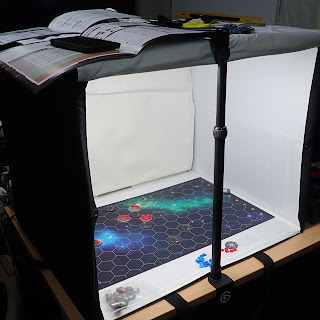Getting up close for macro
Using a multiway @Benro tripod to get really close up to an image. With a good macro lens, you can get a good image, but you always need a way of supporting the lens and camera closeup to the subject.
Macro photography is a fascinating genre of photography that allows us to explore the intricate details of the miniature world that often goes unnoticed by the naked eye. Whether you're a seasoned photographer looking to expand your skills or a beginner eager to dive into the world of close-up photography, this article will provide you with valuable insights and tips to get started with macrophotography.
What is Macro Photography?
Macro photography, often referred to as close-up photography, is a specialized technique that involves capturing images of small subjects at a 1:1 ratio or greater. In simpler terms, it allows you to take photographs that reveal the minute details of subjects such as insects, flowers, water droplets, and more. This genre of photography requires specific equipment and techniques to achieve the desired results.
Gear Essentials
1. Macro Lens: The most critical piece of equipment for macro photography is a macro lens. These lenses are designed to focus at very close distances and produce sharp, detailed images of small subjects. Popular choices include the Canon EF 100mm f/2.8L Macro and the Nikon AF-S Micro-NIKKOR 105mm f/2.8G.
2. Tripod: Using a sturdy tripod is essential for macro photography because it helps you maintain stability and precision while shooting. It allows you to compose your shots carefully and avoid camera shake, which can ruin close-up images.
3. Ring Flash or External Flash: Good lighting is crucial in macro photography. A ring flash or an external flash can provide even, diffused lighting that helps eliminate shadows and highlights the intricate details of your subject.
4. Extension Tubes or Close-Up Filters: If you're on a budget or looking for alternatives to a dedicated macro lens, extension tubes or close-up filters can be used to reduce the minimum focusing distance of your existing lens, effectively turning it into a macro lens.
Techniques for Successful Macro Photography
1. Use a Small Aperture: To maximize the depth of field and ensure that your subject is entirely in focus, use a small aperture (higher f-number) like f/16 or f/22. This is especially important in macro photography where depth of field can be extremely shallow.
2. Focus Manually: Achieving precise focus can be challenging in macro photography, so it's often best to focus manually. Use Live View on your camera and magnify the image to ensure that your subject is sharp.
3. Compose Carefully: Pay attention to composition. In macro photography, the background can become a distraction, so look for clean, uncluttered backgrounds or use a shallow depth of field to blur them out.
4. Patience is Key: Macro photography requires patience. Small subjects can be elusive and easily disturbed, so take your time and be prepared to wait for the right moment to capture your shot.
5. Experiment with Lighting: Experiment with different lighting techniques, such as side lighting, backlighting, or diffused natural light, to create unique and captivating images.
6. Consider Focus Stacking: When dealing with extremely shallow depth of field, focus stacking can be a powerful technique. Take multiple shots at different focus points and combine them in post-processing to achieve a fully focused image.
Post-Processing
After capturing your macro shots, post-processing can play a crucial role in enhancing and fine-tuning your images. Software like Adobe Lightroom and Photoshop can help you adjust exposure, contrast, colors, and sharpening to bring out the best in your macro photographs.
Conclusion
Macro photography is a captivating and rewarding genre that allows us to explore the mesmerizing world of tiny details that often go unnoticed. With the right gear, techniques, and patience, you can capture stunning close-up images that reveal the beauty of the miniature world. So, grab your camera, find some interesting subjects, and start your macro photography journey today!





Comments
Post a Comment